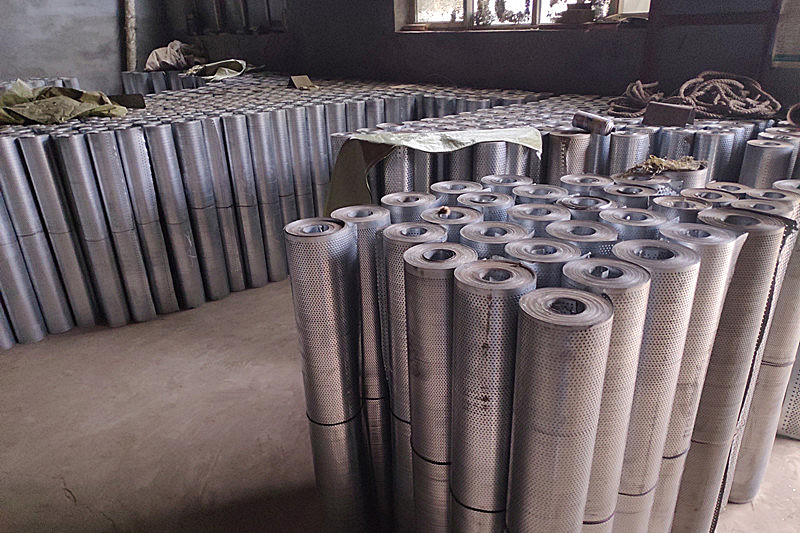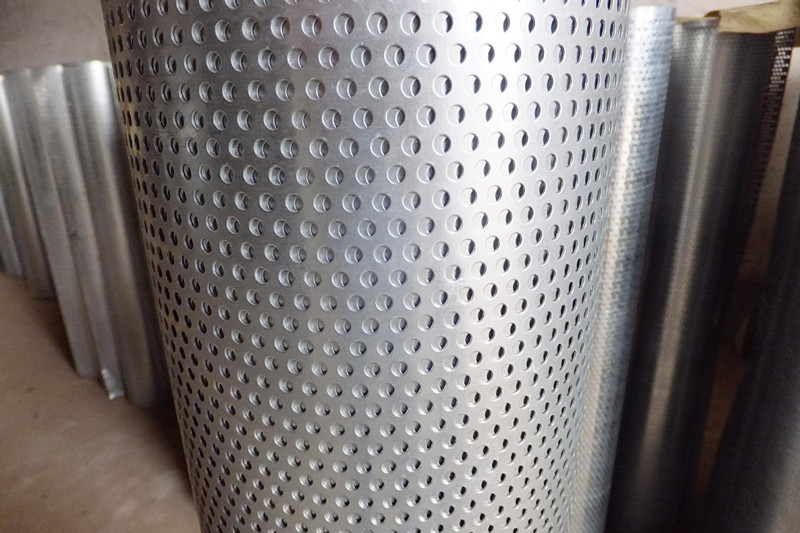Comprehensive Introduction to Roll Plate Punching Net: Materials, Hole Types, Applications & Key Features
Source:www.cn-psp.cnAuthor:河北森驰公司 Last updated:2025-06-11 16:28:29 Browse:
The Roll plate punching net is a versatile and widely used metal mesh product, recognized for its exceptional structural features and multi-functional designs. It plays a vital role across numerous fields, including construction, industrial equipment, environmental protection, and more. In this article, we will delve into the materials, hole types, arrangement methods, technical specifications, product advantages, and typical applications of the Roll plate punching net to provide you with a complete understanding of its value and usage.
The Roll plate punching net is manufactured using high-strength and corrosion-resistant metallic or non-metallic sheets. Common material choices include:
Iron plate: Cost-effective and suitable for environments with low anti-rust requirements.
Stainless steel plate: Offers superior corrosion and oxidation resistance, ideal for high-humidity or chemical environments.
Stainless steel honeycomb plate: Provides enhanced load-bearing capacity and structural integrity.
Copper plate: High electrical conductivity and decorative appeal, used in electronics and luxury architectural applications.
Aluminum plate: Lightweight and corrosion-resistant, easy to process and install.
Galvanized plate: Combines the strength of iron with anti-rust coating, delivering excellent cost performance.
Other metal and non-metal materials: Custom materials like titanium alloys or polymer sheets are available upon request.
Choosing the right material directly impacts the durability, functionality, and adaptability of the Roll plate punching net to various working conditions.

Roll plate punching net
2. Diverse Hole Shapes for Customized Needs
The Roll plate punching net offers a wide variety of hole shapes to meet different performance and aesthetic requirements. Common hole types include:
Round holes: Universally applicable for general filtration, ventilation, or protection.
Elongated round (oval) holes: Provide higher airflow or liquid passage capacity.
Square holes: Useful for sorting granular materials or decorative purposes.
Triangular holes: Visually unique, often used for design elements or specialized filtering.
Raised (embossed) holes: Add anti-slip function and a 3D effect.
Diamond-shaped holes: Enhance structural reinforcement and are widely used in architecture.
Hexagonal holes: High filtration efficiency, commonly found in chemical and environmental fields.
Cross holes: Decorative and functional, suitable for high-end applications.
Custom shapes: Manufactured based on client samples or design blueprints.
3. Flexible Hole Arrangements
The hole arrangement significantly influences the Roll plate punching net’s mechanical strength, ventilation, and visual appeal. Common layouts include:
45-degree staggered: Enhances strength and ensures even load distribution.
60-degree staggered: Creates a compact and uniform appearance, perfect for high-precision filtering.
Straight row: Easy for cutting and machine processing, suitable for standardized production.
Custom arrangements: Designed according to special machinery or aesthetic requirements.

Roll plate punching net
4. Technical Specification Range
The Roll plate punching net supports a wide range of custom specifications to meet different project demands:
Hole diameter: From 0.2 mm to 200 mm;
Plate thickness: Ranges from 0.2 mm to 20 mm, covering both light and heavy-duty applications;
Hole center spacing: As small as 0.3 mm, enabling fine filtration and precise manufacturing.
These precision capabilities make the Roll plate punching net highly adaptable to modern manufacturing and industrial processing.
5. Features & Advantages of Roll Plate Punching Net
Thanks to its unique structure and high-quality materials, the Roll plate punching net offers the following features:
Flat and smooth surface with an attractive appearance;
Durable and wear-resistant, suitable for long-term use in demanding environments;
Excellent ventilation and permeability, promoting airflow and fluid passage;
Easy to shape and install, available in roll form or sheet form to suit various structural needs;
Highly versatile, capable of fulfilling multiple functions through changes in hole size and layout.
6. Broad Range of Applications
The Roll plate punching net is not limited to a single industry but spans a wide variety of applications. Major use cases include:
Industrial manufacturing: Used as protective covers, sieves, filtration panels, and ventilation plates.
Environmental equipment: Suitable for sewage treatment, air purification, noise control, and more.
Architectural decoration: Ideal for facades, ceilings, and wall panel designs.
Agriculture and food processing: For grain sorting, fruit washing, and filtering tasks.
Transportation infrastructure: Applied in subways, highway barriers, and ventilation grilles.
Electronic equipment: Functions as heat dissipation components or shielding elements.
Home and furniture: Used in shelving, metal furniture, lighting, and storage systems.
By adjusting the hole diameter, density, and layout, the Roll plate punching net can be precisely tailored to meet specific functional needs.
7. Conclusion
With its flexible customization, outstanding performance, and broad market applicability, the Roll plate punching net has become an indispensable material in modern industry and construction. Selecting the right material, hole shape, and technical configuration can significantly enhance the safety, efficiency, and aesthetics of your project.
If you have any inquiries regarding procurement, design customization, or product consultation, feel free to contact us. We are committed to providing one-on-one technical support and delivering premium Roll plate punching net solutions tailored to your needs.

